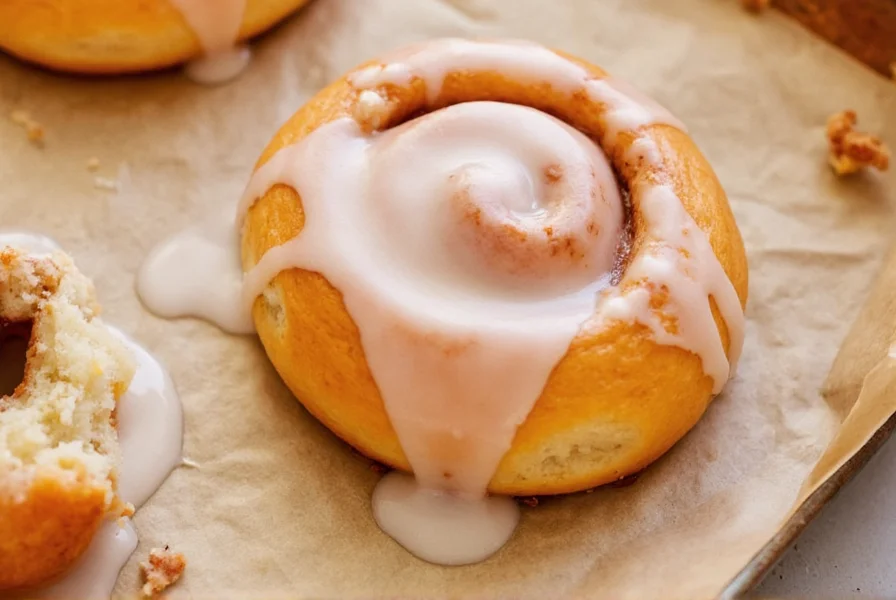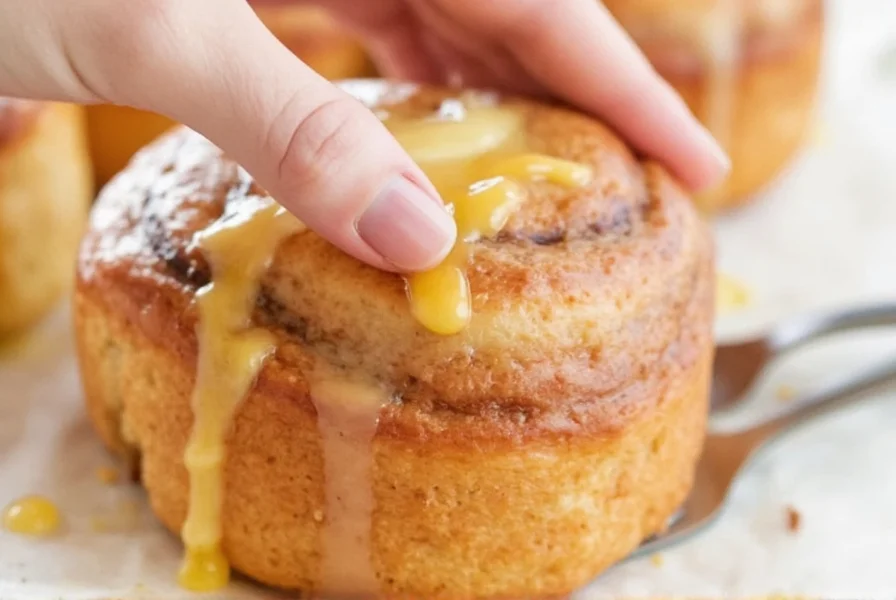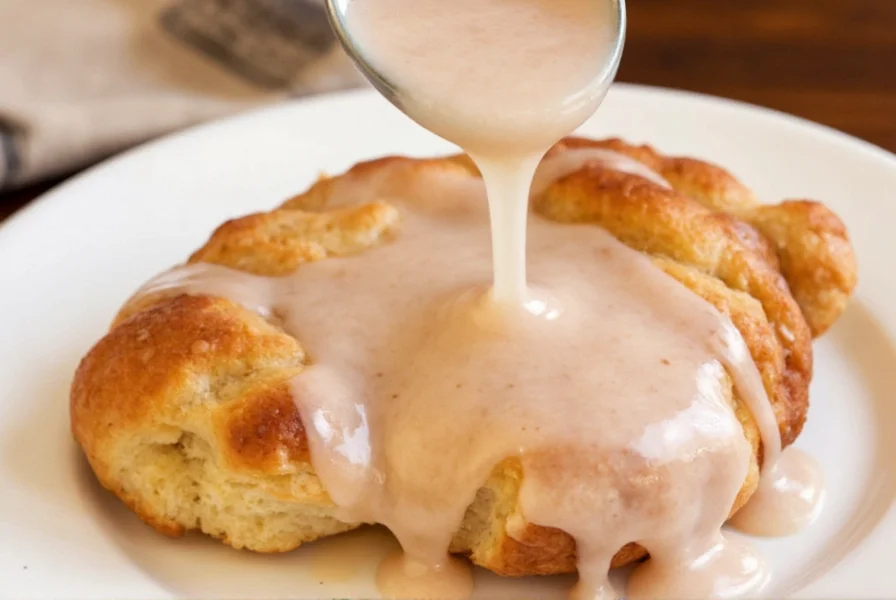Creating the perfect glaze for your homemade cinnamon buns requires understanding the science behind the ingredients and their interactions. While many bakers focus solely on the dough and filling, the glaze serves as the finishing touch that can elevate your pastries from good to extraordinary. This guide provides professional insights into crafting the ideal cinnamon bun icing that maintains its texture, flavor balance, and visual appeal.
Essential Ingredients and Their Roles
Understanding why each component matters helps you adjust the recipe confidently. Powdered sugar forms the base of traditional cinnamon roll icing, providing both sweetness and structure. The cornstarch in powdered sugar prevents crystallization and creates that signature smooth texture. Whole milk offers the right fat content for richness without making the glaze too heavy, while melted butter adds depth of flavor that transforms a basic icing into something special.
Vanilla extract enhances the overall flavor profile, but don't stop there. Professional bakers often incorporate small amounts of other flavor enhancers that work beautifully with cinnamon buns. A pinch of salt balances the sweetness, while a teaspoon of cream of tartar prevents sugar crystallization for an even smoother finish.
Step-by-Step Preparation Guide
Follow these precise steps for flawless cinnamon bun glaze every time:
- Sift 1 cup powdered sugar to eliminate lumps
- Mix with 2 tablespoons milk, 1 tablespoon melted butter, and 1/2 teaspoon vanilla extract
- Whisk vigorously for 30 seconds until completely smooth
- Test consistency by lifting the whisk - it should form a ribbon that dissolves after 5 seconds
- Adjust as needed: add sugar for thickness or milk for thinness
- Apply immediately to warm (not hot) cinnamon buns
The temperature of your buns matters significantly. Applying glaze to piping hot buns causes it to melt through the pastry, while cold buns make the glaze set too quickly. The ideal window is 5-10 minutes after removing from the oven when they're still warm but not steaming.
Popular Glaze Variations
While the classic recipe works beautifully, these tested variations offer exciting alternatives for different occasions:
| Variation Type | Key Ingredients | Best For | Consistency Tip |
|---|---|---|---|
| Cream Cheese | 3 oz cream cheese, 1/4 cup butter | Holiday baking | Add milk 1 tsp at a time |
| Lemon Zest | 1 tbsp lemon zest, 1 tsp juice | Spring brunches | Reduce milk by 1/2 tbsp |
| Bourbon | 1-2 tbsp bourbon, pinch of nutmeg | Adult gatherings | Let sit 5 mins before applying |
| Vegan | Non-dairy milk, coconut oil | Dietary restrictions | Chill 10 mins before use |
Troubleshooting Common Glaze Problems
Even experienced bakers encounter issues with cinnamon roll icing. Here's how to fix the most common problems:
Glaze too thin: This usually happens when the buns are too hot or you've added too much liquid. Immediately whisk in additional powdered sugar, one tablespoon at a time, until you reach the proper consistency. For future batches, let your buns cool slightly before glazing.
Glaze too thick: If your icing has become paste-like, it's likely due to excess sugar or insufficient liquid. Gradually incorporate additional milk or cream, one teaspoon at a time, until you achieve the desired ribbon consistency. Remember that glaze thickens as it cools, so aim for slightly thinner than perfect when applying.
Glaze separates: This occurs when ingredients aren't properly emulsified. Start with room temperature ingredients and ensure your butter is fully melted but not hot. Whisk vigorously for at least 30 seconds to create a stable emulsion. If separation happens, add a tiny amount of additional milk while whisking continuously.

Storage and Application Techniques
For best results, apply glaze immediately after preparation while it's still fluid. If you need to store extra glaze, keep it in an airtight container at room temperature for up to 2 hours. Refrigeration causes glaze to harden significantly, requiring careful reheating with additional liquid to restore proper consistency.
Professional bakers use specific application techniques that home cooks can easily replicate. Instead of simply pouring, use a spoon to drizzle the glaze in a zig-zag pattern across the buns. This creates visual appeal while ensuring even coverage. For individual buns, dip the top surface directly into the glaze for perfect saturation without oversoaking.
When planning your baking timeline, remember that glaze sets within 15-20 minutes at room temperature. Schedule your baking so that glazing happens just before serving for optimal appearance and texture. The ideal glaze should maintain a slight sheen while providing that satisfying pull when biting into the bun.

Frequently Asked Questions
Can I make cinnamon bun glaze without powdered sugar?
While powdered sugar creates the smoothest texture, you can substitute with 1 cup granulated sugar processed in a food processor with 1 tablespoon cornstarch until fine. The texture won't be quite as smooth, but it will still work. For best results with granulated sugar, heat the mixture gently while stirring until the sugar dissolves completely, then cool slightly before using.
How do I prevent my glaze from becoming grainy?
Graininess typically occurs when sugar hasn't fully dissolved or when ingredients are at different temperatures. Always sift your powdered sugar, use room temperature liquids, and whisk vigorously for at least 30 seconds. If making a warm glaze, ensure any heated ingredients have cooled slightly before combining with sugar to prevent premature crystallization.
What's the difference between glaze and frosting for cinnamon buns?
Glaze is thinner and more pourable, designed to soak slightly into the pastry while maintaining a shiny finish. Frosting is thicker, often containing more butter or cream cheese, and sits on top of the pastry. Glaze typically uses a 2:1 sugar-to-liquid ratio, while frosting uses a 4:1 ratio. For traditional cinnamon rolls, glaze provides the perfect balance of sweetness without overwhelming the pastry.
Can I add spices directly to my cinnamon bun icing?
Yes, but use caution with dry spices as they can create texture issues. For best results, mix 1/8 teaspoon of ground cinnamon or nutmeg with the powdered sugar before adding liquids. For stronger spice flavors, infuse your milk by heating it with spices, then straining before use. Liquid flavorings like maple syrup or citrus juice integrate more smoothly than dry spices.
How long does homemade cinnamon roll glaze last?
Freshly made glaze should be used within 2 hours at room temperature for best results. If stored in an airtight container in the refrigerator, it will keep for 3-4 days. Before reusing refrigerated glaze, bring it to room temperature and whisk in small amounts of milk to restore proper consistency. Freezing is not recommended as it alters the texture significantly.











 浙公网安备
33010002000092号
浙公网安备
33010002000092号 浙B2-20120091-4
浙B2-20120091-4